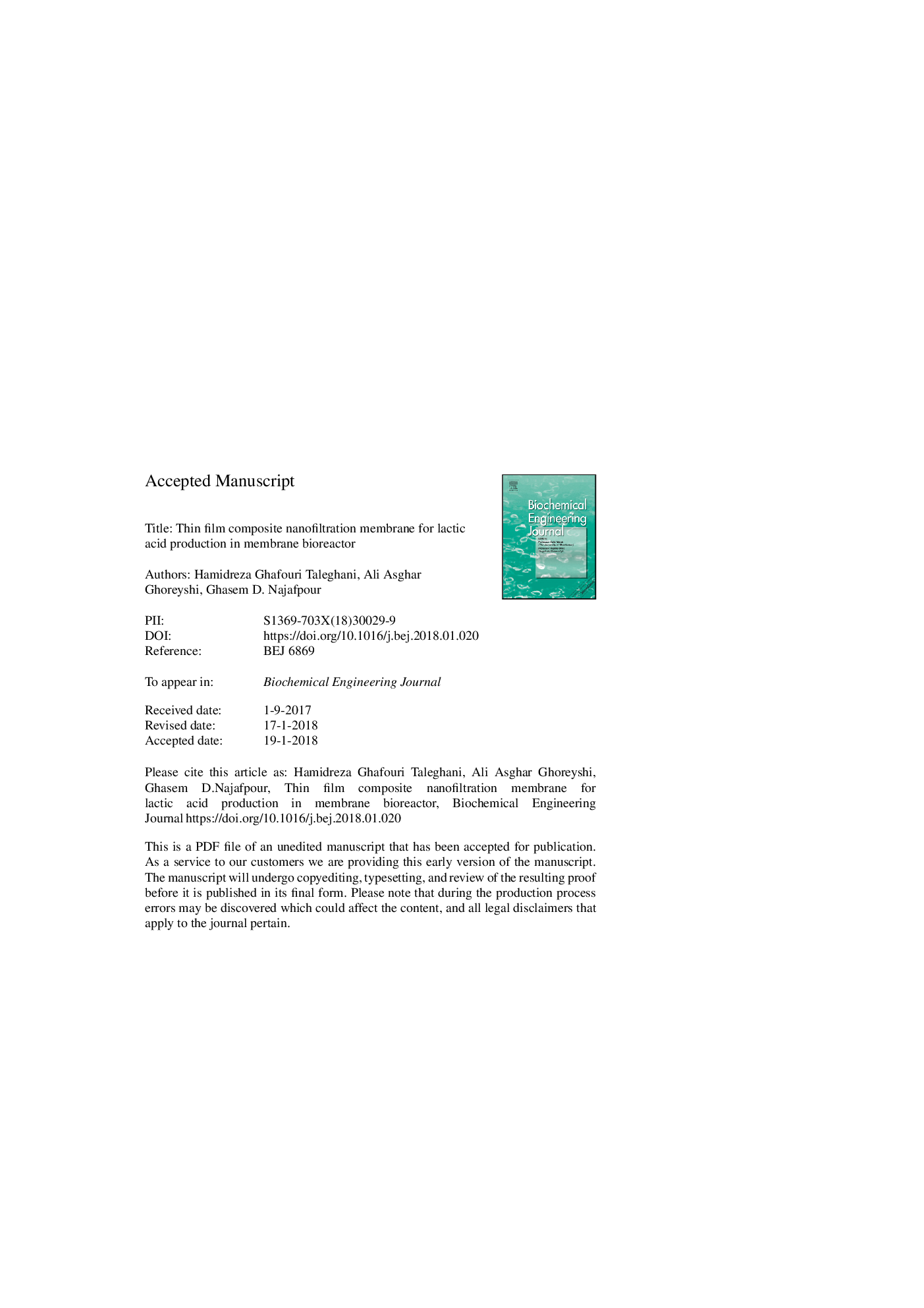| Article ID | Journal | Published Year | Pages | File Type |
|---|---|---|---|---|
| 6482263 | Biochemical Engineering Journal | 2018 | 29 Pages |
Abstract
In this work the thin film composite nanofiltration (TFC-NF) membrane was fabricated for lactic acid separation in membrane bioreactor. The morphological study was carried out with scanning electron microscopy (SEM) and atomic force microscopy (AFM). The SEM and AFM studies indicated that using interfacial polymerization causes a rough and dense film to be formed on the polyethersulfone (PES) support membrane. The permeate flux and separation properties of the membrane was investigated at 25â¯Â°C and trans membrane pressure (TMP) of 5â¯bar and was compared with 3 commercial NF membranes. The high lactose and low lactic acid rejection of 80% and 19% was obtained with TFC NF membrane. The membrane was used to produce lactic acid from whey lactose in membrane bioreactor (MBR). Continuous lactic acid production has two stages of Integration of fermentation and membrane separation which were assessed and compared to the conventional bioreactor performance (CBR). In order to produce lactic acid from whey, the Lactobacillus bulgaricus (ATCC 8001) was used in the process. The maximal productivity of 6.1â¯gLâ1â¯hâ1 was obtained at the dilution rate of 0.24â¯hâ1, while the value obtained in the CBR was 3.4â¯gLâ1â¯hâ1 at the same dilution rate. The maximum concentration of lactic acid was obtained at the dilution rate of 0.04â¯hâ1 in both MBR and CBR with values of 38.2 and 22.5â¯gLâ1.
Related Topics
Physical Sciences and Engineering
Chemical Engineering
Bioengineering
Authors
Hamidreza Ghafouri Taleghani, Ali Asghar Ghoreyshi, Ghasem D. Najafpour,
